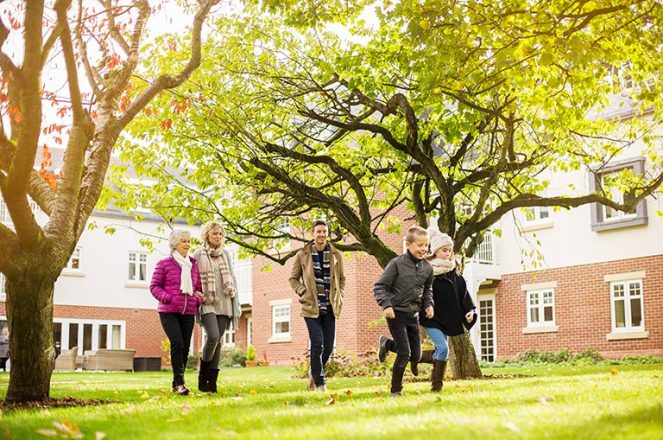A recent report by McCarthy Stone highlighted ageism as one of the major challenges facing older people in the UK.
The UK’s leading developer and manager of retirement communities said negative misconceptions about older generations is leading to flawed policy and is having a damaging effect on people’s wellbeing in later life.
The report also highlighted that many young people don’t understand what it means to be old, and often fear ageing – when in reality it can be a time of great purpose and achievement.
To address these (and other) challenges, McCarthy Stone are delivering their Vision for Later Life in Britain – but it’s just one trend of many that is informing our approach to delivering sustainable, inclusive and affordable retirement properties that benefit the older generation and society as a whole.
For some time, Box Architects have argued that creating high-quality, long-term retirement accommodation – such as McCarthy Stone’s Retirement Living PLUS properties – frees up other housing in towns where there are large stocks of large, low-occupancy homes. The resulting influx of families and younger people can provide a welcome boost to local shops and services, and provide economic benefits for the whole area.
To make properties ‘long-term’, Box are working with McCarthy Stone to design retirement communities that allow residents to stay longer. Larger one- and two-bedroom apartments, guest suites for family and friends, communal areas, high-quality restaurants and staff areas to provide extra care for residents all help provide a balance of long-term independence and support.
While Box’s project for McCarthy Stone at Devonshire Place in Buxton, Dawson Grange in Ripon and Matcham Grange in Harrogate help reinforce the important distinction between retirement and ageing, other trends are also influencing our design.
For example, modern methods of construction can be more cost-effective and can cut development times by as much as 50% – fast-tracking housing for older people in areas of greatest need.
However, any benefits from MMC can quickly be negated if designs and proposals are held up in planning. Delivering ‘appropriate development’ often requires early-stage consultation with local authority teams, and a degree of give and take on both sides.
In Ripon, planning inspectors have agreed that the McCarthy Stone development, completed last year, ‘is entirely appropriate in terms of appearance and scale’, while the design of Matcham Grange in consultation with Harrogate Borough Council will respect the character of the surrounding area.
Doing so need not compromise the trend towards MMC. Although Devonshire Place will be a traditional stone and mortar construction, the majority of the building components will still be pre-fabricated.
Here at Box, we’ll continue to explore the trends to ensure we deliver the best-possible solutions – and support McCarthy Stone and others make the UK the best place in which to grow old.
